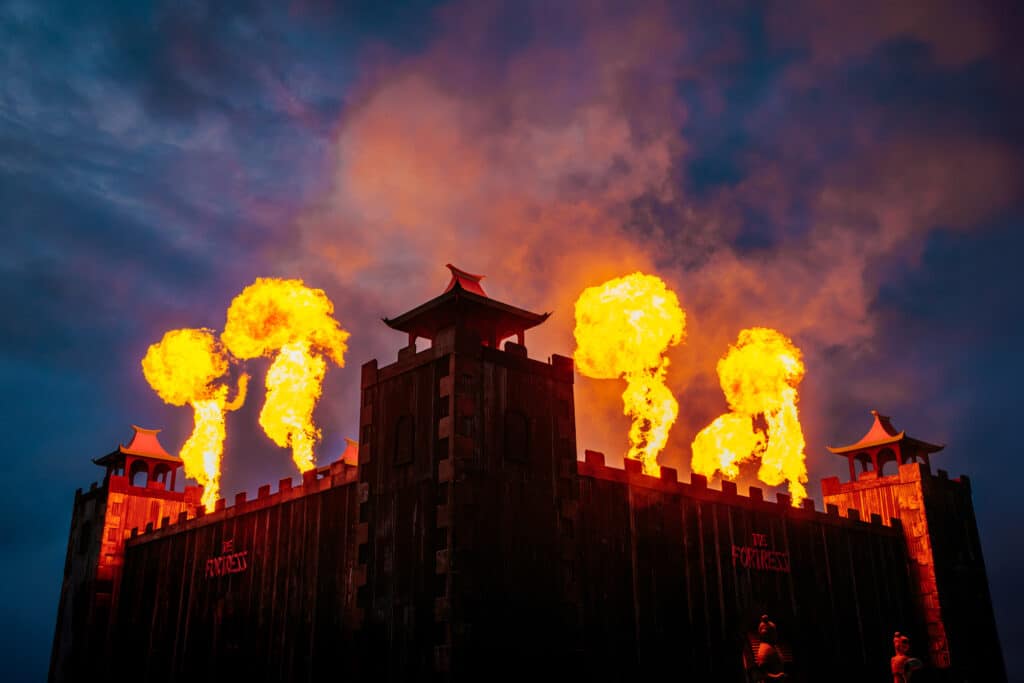There is no shortage of great ideas. The thing that counts though, is making them happen. This is what differentiates a “wantrepreneur” from a successful and stable business owner. And in these turbulent times, when funding seems incredibly hard to find, possibly the most important part of running an immersive experience company is the financial aspects. How do you make your immersive projects fit into a sustainable business model? This article will focus on some of the ways you can fund your project to get it off the ground.
Contents Summary:
Grant Funding
Despite how bleak the economic landscape can often seem, there are still many pots of funding out there to help launch your project.
What is grant funding?
Grants can fund your project, help with ancillary costs, help with training, provide free resources and so on. Grants can be found in a wide range of places, such as from government bodies, organisations like the The Arts Council, or philanthropic groups and even charities.
Often, grant funding comes in the form of money from public funds or private trusts that is offered to a project because of it’s benefit to the public or has entrepreneurial potential in key locations and sectors which have a high demand of development. The funds can be given in stages as you achieve milestones, whilst other times it might pay for expenses you incur. In some cases, you may need to match the funding provided with other sources, such as your own investment. It all depends upon the specific grant you are applying for.
In my experience, the process of applying for grants can be laborious, frustrating and extremely time consuming, but, after all, it is money which is available without the expectation of a cash based return that you’re trying to get your hands on!
My top three tips for applying for grant funding
- When writing an application, you often repeat yourself over and over again. I recommend saving your writing into a Google Doc or Sheet, so you can copy and paste chunks where appropriate. Do not ‘waste’ the work you do on a failed grant application, save it for use somewhere else.
- Try and find a personal connection to someone on the grant team. If the organisation is small or approachable enough, try reaching out and asking a few questions. There is a chance they will remember you, and whilst funders must remain fair and unbiased at all times, business is about relationships and people.
- Treat the process of applying for grant funding like a job. In many cases it takes a long time to fill out the forms, provide all the paperwork and so on. Treat it like a job that you ‘may’ get paid for. Be disciplined. Assign time to work on the applications and stay focused.
Places to find grants
This list is not exhaustive, but gives you a starting point for where to look…
Funding bodies
- BFI https://www.bfi.org.uk/get-funding-support
- Innovate UK https://www.ukri.org/councils/innovate-uk/
- Creative UK https://www.wearecreative.uk/
- National Lottery https://www.tnlcommunityfund.org.uk/funding/under10k
- Arts Council https://www.artscouncil.org.uk/our-open-funds
- UK Government https://apply-for-innovation-funding.service.gov.uk/competition/search
- British Council https://www.britishcouncil.org/arts/opportunities
- BBC https://www.bbc.com/charityappeals/appeals/grants
Other places to consider
Consider doing a web search for your specific niche. For example…
- If your project has a local impact, consider checking with your local or county council.
- There are many prizes and funds out there if your project has a climate or environmental aspect.
- Diversity, inclusion, underrepresented groups and other positive social activities will have specialist grants and prizes too.
The pros and cons of grant funding
Camille Gillet from Immergency was the successful recipient of a grant from Innovate UK, for her climate change focused escape room. She used the money to run a 3 month trial of her room in Covent Garden, and test her ideas with real customers. She said, “From that point, we were in a better position to raise funding and to start conversations with potential clients.”
On the downside, Camille reported that the application was long, and she applied 3 times before being successful. Furthermore, this particular grant only provided 70% of the project costs, and they required evidence in advance of having all the money available – meaning she had to source the startup fees herself first, and then recoup them from the grant later.
Despite this, there is little or no risk in trying your luck in applying for a grant, other than your time.
Investors for Immersive Experiences
If you are willing to give up a stake in your business, then working with investors could be a positive way of raising capital for a project or to ease cashflow worries. Here are some of the things you should consider when working with outside investors:
Think carefully before giving up an ownership share in your business.
How badly do you need the money? Once the deal is done, that share of your business is gone for good.
Ask what the investor will bring to your business other than money.
Sometimes the cash is enough, but often another pair of hands can be worth a lot more. When speaking to investors, find out what they will do for you beyond just the capital investment.
Will they open doors for you? Will they provide business support? Accountancy? Legal help? There might be other places to get cash if that is all you need.
Be careful about losing control.
Read the terms of your agreement carefully and seek legal advice.
Think about the pressure.
Often the first place people look for investors is from people they know, but consider the pressure this will put on your shoulders. It’s far easier to shutter an unsustainable business when your partners are not people you have a close emotional connection with. And in reality, sometimes the best thing to do after trying an idea that didn’t work is to move on and try something new!
Useful Resources
- Angel List https://www.angellist.com/
- Crowdcube https://www.crowdcube.com/explore/raising
- British Business Bank https://www.british-business-bank.co.uk/finance-hub/
- Santander X https://www.santanderx.com/en/index.html
- SetSquared https://www.setsquared.co.uk/
Partnerships
Similar to investors, sometimes you can find resources to boost your financial sustainability through like-minded partner organisations. For example, TV companies are often looking at ways of marketing their shows or extending their IPs. Similarly, consider reaching out to a ticketing partner early. Tristan Rogers, General Manager at a London Immersive Experience, says:
“Finding a ticketing partner can be a great way of expanding the reach of your show and some of the bigger operators can be willing to come on board as a producer and invest in the production. But of course there is a price to pay, and it’s not unheard of for ticketing partners to demand a share of sales of between 30% and 50%.”
Crowdfunding
I have had great success raising money on platforms like Kickstarter. It works especially well for physical products like board games, or digital products where you can provide an instant demo or early access.
How does it work?
On Kickstarter, you pitch your idea to the public, who can ‘back’ you financially for a reward. For example, they may receive a copy of your product when it is ready. The money is only collected from the backers when you reach your funding target.
Kickstarter Tips
Preparing for a Kickstarter project takes time. You need to spend a small amount of money on nice graphics, mockups, videos or taster material because you need to provide your audience with some reason to trust you.
For a full list of Kickstarter tips, take a look at my article “Lessons from a successful Kickstarter campaign”
Debt Financing
Possibly the most obvious and least attractive source of funds for your fantastic new immersive experience is debt financing. This is the process of borrowing money from a bank or similar financial institution, in the form of a loan.
Personally, this is always the last option for me as it creates risk in the form of a liability. If you can’t meet the repayments, your business could be dissolved. Many banks will also require a personal guarantee which puts your own assets at risk too. Not fun!
General advice for fundraising
Make a good pitch deck
Use tools like Canva to create a good looking pitch deck that showcases your brand vision.
Leave out the text
When pitching, DO NOT fill your slides with text. You want your audience listening to you, not reading the screen. Your slides should be made up of photographs, graphs, and other images that add weight to what you are saying. Text should be used sparingly and only to highlight a point you are making.
Go with passion
If you are passionate about your project, let that come through in your discussions. Do not feel you have to be super corporate and stiff in your presenting style when pitching.
Professionalism is important but demonstrating your passion and knowledge of your subject-matter will win more hearts than precise facts and figures (those come later!)
Everyone is human
Following on from the above, don’t be afraid of the people you are pitching too. They are human beings too. It’s not like in the movies, they’re not all fire breathing dragons. I should know, I’ve been on BBCs Dragons Den so you can take my word for it!
Most investors want you to do well and will ask questions that help them to understand your project. They are not trying to catch you out, they are looking for reasons to invest. All you have to do is help them to find it.
Let’s finish with some positivity and a challenge. It’s all very well trying to fundraise for your dream project, but there are other routes to success. I am a big advocate for the lean startup methodology, which proposes that rather than trying to build the biggest and bestest idea, why not start with the smallest and leanest part. What is the ‘minimum viable product’ you can make to get your idea off the ground?
Some of the most successful companies I have worked with started with NO funding whatsoever – they just got on and built something small and basic and started ‘selling’. A paper prototype instead of a full build. An audio download instead of live actors. A voiceover on top of some stock footage instead of the fully animated film you want.
What can you do TODAY to demonstrate your idea? Having ‘something’ to show will open far more doors than you’d imagine, so get creative. Good luck!





